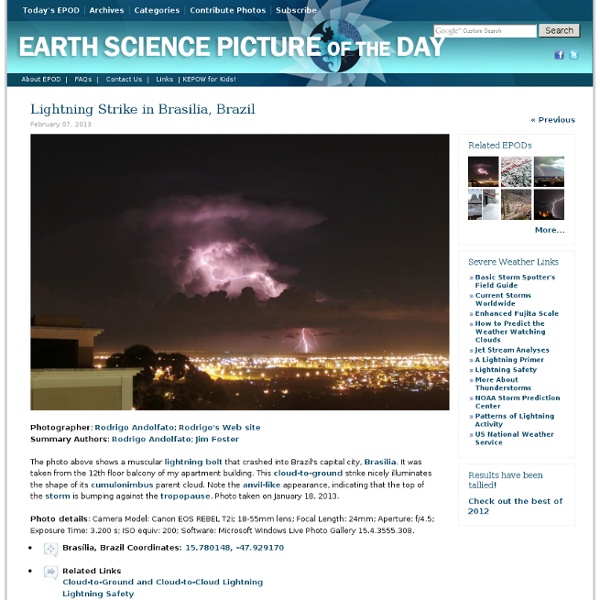



NASA Earth Observatory : Home Glacial Evidence in Central Park Photographer: Bruce Gervais Summary Authors: Bruce Gervais; Jackie Phillips There's ample evidence of New York City’s glacial history throughout Central Park. The top photo shows two glacial erratics. These large boulders were transported by moving ice at the height of the Wisconsin glaciations, around 20,000 years ago. The lower photo shows an elongated asymmetrical landform called a roche moutonnee. Photo details: Top - Camera Maker: Panasonic; Camera Model: DMC-TS3; Focal Length: 4.9mm (35mm equivalent: 28mm); Aperture: f/3.3; Exposure Time: 0.0063 s (1/160); ISO equiv: 100.
on reserve Glacial Erratic Photographer: Mark Meyer; Mark's Web site Summary Author: Mark Meyer The photo above showing a delicately balanced boulder was captured in the ablation zone of the Matanuska Glacier near Anchorage, Alaska. This angular rock, about 10 ft (3 m) across, was transported by the glacier from far up the valley. to reclass Free Geology Images - Teachers Images are an important part of teaching geology. They help people to understand complex ideas in ways that words can't. Marli Bryant Miller has been kind enough to share her geology photos with teachers to use in their lessons. Another fantastic website with earth science pictures is the Earth Science Picture of the Day (EPOD). If you have geology images that you would like to share, please email Davida Buehler the link to your website.
Mount Pantokrator Sinkholes Photographer: Bill Metallinos; Bill's Website Summary Author: Bill Metallinos; Jackie Phillips Over the crest of Mount Pantokrator, Greece, lies the most intense cluster of sinkholes in Europe. The 6.2 sq mi (16 sq km) area contains ancient carbonate formations and dolomitic limestone likely created during the Eocene epoch. Photo details: Canon EOS 40D camera; Canon EF 15 mm fisheye lens; f/2.8; ISO 400.